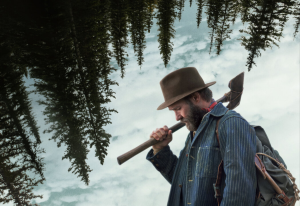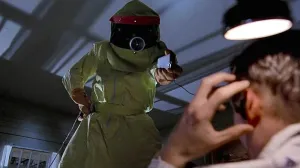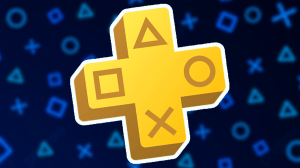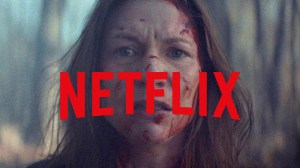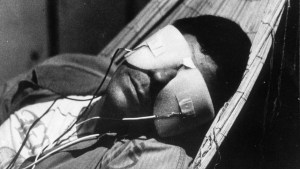Nia Nal/Dreamer may have made her debut on the small screen in CW’s Supergirl, but she’s since gone on to be a major player on the pages of DC comics, entering the main continuity and even finding herself part of a much bigger agenda as part of Amanda Waller’s new Task Force X in Suicide Squad: Dream Team leading into a very surprising turn in Absolute Power. But all journeys have a start and for Dreamer, that journey’s start — in terms of on the pages of comics — is Bad Dream. The graphic novel was first announced in DC Pride 2022 and was published earlier this year. Written by Maines, who originated the character on CW’s Supergirl series with art by SFSX and Lonely Receiver‘s Rye Hickman, Bad Dreams gives Nia a comprehensive origin story that brings one of the most unique and interesting characters to life. ComicBook recently sat down with both Maines and Hickman to talk about Bad Dream, how they brought this story to life and their hopes for what readers take from Bad Dream.
Videos by ComicBook.com
Nicole Drum, ComicBook: Bad Dream, for many people, is going to be a new chapter [of Dreamer’s story] because it is that origin for the people who weren’t along for Supergirl. Nicole, how did you go from Dreamer on TV to Bad Dream?
Nicole Maines: As the show was kind of coming towards its close, as we were coming towards Season 6, I knew the show wasn’t going to go on forever, but this is a character that meant so much to me, selfishly, but also meant so much to so many other people. So, I set up a meeting with DC with the help of our DC correspondent on set, and I was basically like… I had a pitch for a Dreamer ongoing, which I didn’t realize how tall an ask that was, but they were like, “Well, we have our young adult line that we’re looking for more material for, and we don’t have yet a story about sisters.”
And I was like, well, Dreamer has a sister. She sucks. This is great. And so that’s how that kind of got started, and that was February 2020, and so then I had the whole pandemic to kind of plan and to think. And then I got connected to the whole DC team. My editors. We went on looking for artists. We found Rye, and it was just beautiful, and it ended up being perfect. It was the perfect team to bring this story to life.
It’s beautiful. I think it’s got a lot that fans of Supergirl recognize, and we know, oh, Yvette, that was Nia’s roommate on the show, that’s fun. And things that we recognize from the show, like the powers being passed down from mother to daughter. She has an older sister who she thinks gets them, and then she does, and her family wasn’t prepared for that. So, there were a couple of key things, kickball. There was a throwaway line in Supergirl where she says, “I broke my nose when I was 15 during a game of kickball,” and I was like, that feels like as good a place as any, to kick this story off, and that became the thing.
And then everything else we got to change and make different. We knew she lived in an alien community called Parthas that was supposed to be very inclusive and supposed to be a safe place for aliens on Earth. I wanted to also show her as even in this diverse community, she’s the odd one out, because I think for trans people, especially now, as our identities are becoming more politicized, we consistently find ourselves in these quote-unquote “diverse spaces” or places that are supposed to be inclusive, or places where people are like, “Oh yeah, we’re feminists. We’re totally,” and then it always seems like we’re [trans people] the straw that breaks the camel’s back. It always seems like, “Oh my God, yeah, love everybody except whatever’s happening with those transgenders. Oh, my God.” And I wanted to hopefully bring some of that feeling to Dreamer’s origin, where she’s like, “I don’t understand why I’m the f-cking weird one.”
One of the things I think is genuinely beautiful about comics, or graphic novels, or anything that has a visual component in its storytelling is that the words on the page are really only half the story. The rest of it comes with the art. Rye, how did the two of you come together, and what was working together for you specifically? Because I mean, Nicole got this personal relationship with Dreamer that Dreamer’s her baby, but this is now you’re stepping into this role. Talk to me a little bit about that.
Rye Hickman: Yeah, I definitely did think a fair deal about the relationship that this book was going to have with the visuals of the TV show. I clearly made the decision to not match them up very often, and one of the reasons why I felt super confident in doing that was that Nicole made me a f-cking Pinterest board, which that’s gold. That is just pure gold, because it lets me in on what she’s thinking. And when she says a blue dress, that could mean 5 million different things, and if you just have a visual, it allows us to get on the same page so much better. And so, I felt really comfortable and confident making the visual choices that I did, because I’d seen already, and I felt like my re-imagines would actually… the visuals that are already out there.
Every artist has a process. What is your process like, sitting down to do the work? How was that like for you? Tell me about what your process is, because I’ve got to admit, there are some panels and there are some moments in this that are so cinematic, like the dream sequences.
Hickman: Those were definitely some of my favorites to create. Yeah, I mean in general, the first step is drink as much coffee as is humanly possible. And I like laying out pages in big, big, chunks so that I can get a really pulled-back view of what the story is going to look like, but mostly for the reader. I find that way I can vary up my layouts more, and surprise people with fresh layouts, rather than sort of having something that feels stodgy and same-y across the pages, so it was really nice that I got to do that for this book. It made me happy for sure.
And then I don’t know, from there I feel like I’m a pretty standard process person. I do my little pencils and then when I go to inks… Oh, for pencils at least, I typically listen to podcasts, or audiobooks, or what have you, just because pencils are where I’m doing a lot of construction on the page. They’re like perspective grids, and are the thumbs on the right side of the hand? That level of stuff, so it’s very technical, but when I go back to inks, that’s where the creativity really re-enters the picture. So, I have various playlists and I did actually make a Dreamer playlist…
I mean it’s not very long, but I would put that on to really get in the zone and try and get in that emotional head space. And I don’t know how much it really affects thinking, but it felt good to do it that way.
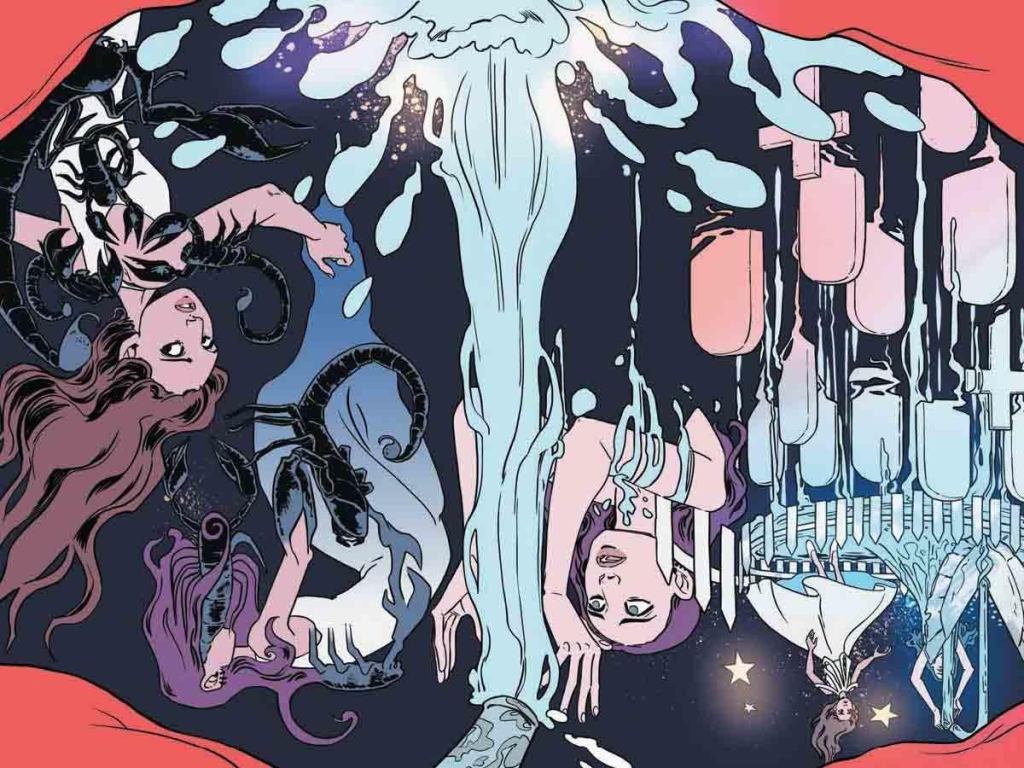
Did you have any visual references in terms of… Like I said, there’s some cinematic feelings in there. I always think about these things, because again, it does feel cinematic in places, and those feel very close and very personal. Where I am in the scene with the characters. Especially, the bus scene. I felt like I might’ve been sitting on that bus with Nia, even though I’m clearly not. I am being who lives in three dimensions.
Hickman: Yeah, I don’t know. Definitely cinematic is very flattering, because I thought mostly about other comic work and other illustrative work. I was thinking a lot about some of the more surreal elements in obviously, The Sandman, another sort of dream-based comic book series. And a lot of the artists that contributed to that, had some really, really fun ways that they played with the medium. And so, I definitely looked to that for inspiration.
And then, I don’t know how much this came across at all, but I was flipping through… My studio has a whole bunch of art books by James Jean and in a lot of his sketch pages, there’s just this sort of messy, overwhelming but beautiful flow to his pages, and I sort of wanted to channel some of that. Definitely didn’t get there, but that was definitely what I was thinking of.
Do you have a favorite moment in the book, like a favorite panel or a favorite piece?
Hickman: This is actually an easy answer. I really, really, loved the ballroom sequence.
To design all of the different characters who are in the spotlight briefly, was a joy. Also, I don’t know, just getting to do crazy layouts with them. There’s a double-paged bed where there’s a big star in the middle. That was really, really fun to lay out. I had a blast.

Nicole, What about you?
Maines: It could definitely be the ballroom scene. I really love when we see Yvette in her gold for the first time. From the second I started doing that, writing that scene, I had this kind of vague concept of, okay, I want to do Yvette covered in Saturn’s rings. I want to do a gold ring chain mail look. And I was like, as many ways of incorporating gold and just perfect the gold rings around the Afro puffs.
It was so brilliant, and it was so iconic, and it perfectly captures that feeling that Nia is supposed to have of witnessing her two worlds coming together for the first time, and watching Yvette come out as this gorgeous golden goddess, is just so perfect.
And I loved the anxiety attack scene. Them on the fire escape together was so beautiful and so perfect. I love all of the dream sequences, of course. I love, I am obsessed with how Sybil came out. That was one of the first characters that I was… I have it here, my sketchbook. When I was first starting, I was trying to come up with this character, and I had to had to do it. I was like, this is such a specific reference, but I was like, we need Michelle Pfeiffer as Sindel in Mortal Kombat, and Rye was like, “Say less. Got it.” Everything in this book came out so perfectly. I’m obsessed with that. I’m obsessed with it.
What I love about Bad Dream is that ultimately, it’s a story that a lot of people can relate to, even if you were a quote-unquote “normal” person who was a teenager, because teenage years are hard for everyone. the book is really about identity and self, and then finding a community. There’s a lot here that anybody can pull from it. Be it a trans youth, a queer youth, or just Suzy with her physics book, who’s just a little nerdy maybe, and doesn’t feel quite like she fits in. What is it that you guys hope that readers across all possible spectrums, take away from this book?
Maines: I think the thing that I hope people take away from it the most, is that there are people that love all of you at the same time. That the parts of your identity, the different facets that make up you as a person, do not have to be at war with each other. And that’s true, and exactly what you said, that’s true of all of us. Of course this is a story, but that’s a lesson that pertains to all of us. We all have had times in our lives where we felt that we had to do the code switching, and do the, “Oh, I can’t be all myself, all the time.”
And that’s how Nia was operating, and then she finds this community of aliens and queer people, and it’s not only tolerating each other, but it’s feeding into each other and uplifting each other, and that’s possible, and we find that. And so of course they wanted this story about sisters, and she finds that with Yvette, and Cat, and Taylor, and even Argus. He can be one of the girls. There are people who will love all parts of you.
Bad Dream is on sale now.
This interview has been lightly edited for length and clarity.

